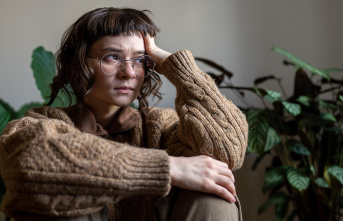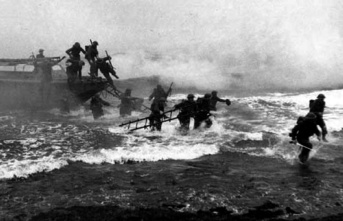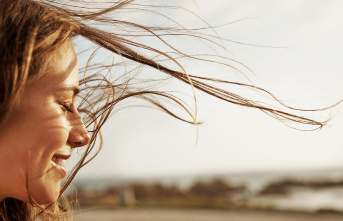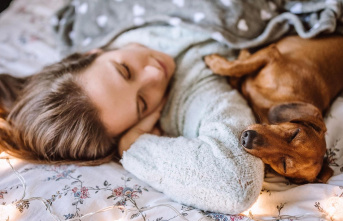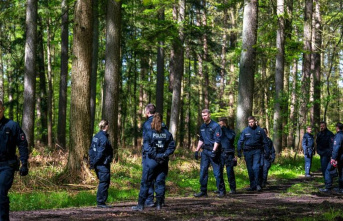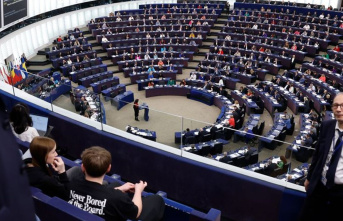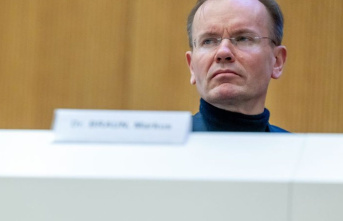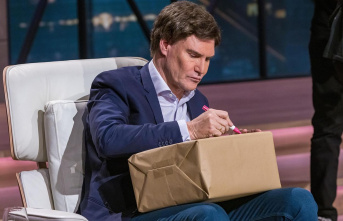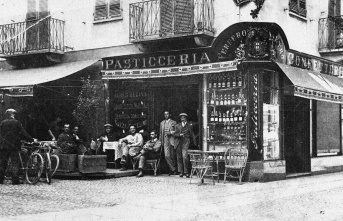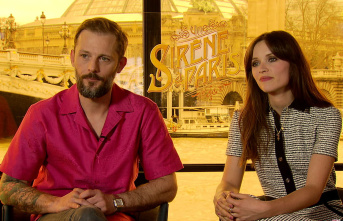On the occasion of the Disney broadcast of "In another world: Behind the scenes of Frozen 2", we asked questions to Marc Smith, director of the story on the animated film. He tells us how this highly anticipated sequel was created.
Now streaming on Disney, the six-part documentary series "In Another World: Frozen 2 Behind the Scenes" aims to share with us the creative process that allowed the Disney animation studio to bring Frozen to life. Frozen 2. We follow in particular the directors, the songwriters, but also the artists and actors of the film in this six-piece making-of which allows us to realize how an animated blockbuster is put on feet. We follow in particular the recording of the songs by the actors, the informal discussions about the key scenes of the film or even the various presentations organized internally to find out if the film is on the right track or if it needs to be modified. .
Among the major players in the creation of Frozen 2, Marc Smith is Story Director, meaning that he leads the team in charge of the film's storyboard, in other words the visual framework of film from which animators can work to bring the directors' vision to life. Marc Smith has worked at the Disney Animation Studio for over 25 years. He recently worked on Zootopia, Rapunzel and Frozen 1 and 2. In a phone interview, Marc Smith answered our questions about the making of Frozen 2, which was not of any rest as you will be able to read it in this interview but also to see it in the documentary series on Disney.
As the storyboard artist for Frozen 1, I was not leading the team and I came on the project later than for Frozen 2. For the second film, I had the chance to start the project very early and participate in the research trip. It's something we do a lot for our films. For this one, we went to Iceland, Finland and Norway. This trip had a very important role in the creation of the film. I had not had the chance to be part of it for the first.
Early in the creative process, there's a lot of discussion with the directors about the characters and the plot. I try to learn more about their vision and how to bring it to the screen. Once the writing for the film begins, my team and I start drawing storyboards for the film. The characters and scenes are drawn by hand. We try to create the whole film in storyboard. Usually, temporary voices are added, dubbed by directors or crew members. Once we have everything composed, we look at what this version of the film would look like. We offer between six and twelve versions of the film, sometimes very different from what the film looks like in the end.
Kristen Anderon-Lopez and Robert Lopez contributed greatly to the film. We had meetings with them every morning, them in New York and us in Los Angeles. They were showing us what they were experimenting with and we were showing them what the film was going to look like. In these kinds of films, you really have to combine your forces to find the right songs at the right time. There was a lot of exchange between the songwriters and the producers. Working on a musical film is a unique challenge. On the other hand, the songs also help to present the story for us. So a big part of our job is to make sure that the logic of the film allows those songs to shine in those specific places.
"I'm Looking For You" is a difficult sequence because it's the culmination of Elsa's story arc for not only Frozen 2 but Frozen 1 as well. where Elsa's powers came from. This sequence in the 2 therefore represents the culmination of his story on the two films. It required a lot of work, a lot of exchanges, conversations and storyboarding then re-storyboarding so that we could consider that it was part of the logic of the film.
I could be wrong but I think we had maybe eight versions before public previews. So eight versions of the film, some very different from the final version, others closer. The more we advance in the project, the less things change. But yes, probably between eight and ten versions.
At the beginning yes because most of the time they are very very good songs or very good scenes. Everyone loves them and you can see what place they could have in the story at this point. But when the story evolves, some songs or scenes become superfluous. Some emotion sequences appear elsewhere or something is changed. I think everyone understands when to take a song or a scene down. But at the beginning, indeed, it is difficult.
It's true and it can be hard at first. But we can accept them as long as we keep in mind that everyone is working towards the same goal. It's actually quite unique to our studio. It doesn't matter who we are: whether we're working on the story, the direction, the security, the technology... Everyone's working for the same purpose. I think it makes it easier to know that we all have good intentions.
For me, that pressure comes from the fact that these characters are very important to a lot of people. We don't want to betray that. We don't want to change these characters but go further with them. It was my wish and that of the directors.
It's an honor that so many people have come back to see these characters and this world. I have the impression that people are still so attached to these characters. It is an honor for me to be part of this adventure.
We do the same thing so I guess we can be compared from that point of view. We work hard to make animated films that appeal to as many people as possible and are important to us. We work with Pixar by the way. Many of my friends work at Pixar. Animation is a small world. It doesn't seem to me that there is a rivalry between us. We're kind of like siblings!
I'm sure there's a healthy competition between the two studios. Or simply inspirations because we look at what Pixar does and we love their films. Sometimes we show them our films and they seem to like them. Sometimes they ask us how we managed to do certain things. This relationship seems healthy to me. I am very happy that we have the chance to exchange between us.
All I can tell you is that I'm at the beginning of the development phase. I am very happy and excited to be part of this group of filmmakers.
8

![Behind the scenes of Frozen 2 with Marc Smith [INTERVIEW]](https://www.indonewyork.com/images/haberler/2022/05/_ac5fe.png)
